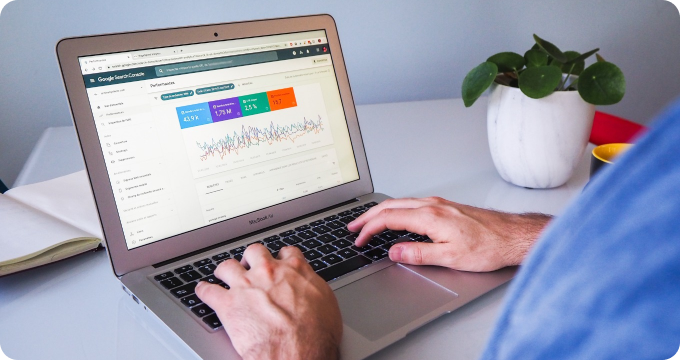How to Hire the Right Special Education IEP Software Provider
- October 27, 2023
- 3 minutes
In the realm of special education, Individualized Education Programs (IEPs) are the cornerstones that uphold the educational rights of students with disabilities. They are meticulously crafted documents that outline the specific needs and goals of a student, acting as a roadmap for their academic journey and growth. As the sophistication of technology continues to burgeon, the reliance on Special Education IEP Software has grown substantially, and rightfully so. The digitization of IEPs provides an efficient, precise, and easily accessible platform for parents, educators, and administrators alike. However, the task of selecting the appropriate IEP software provider can be daunting. This post seeks to elucidate this process, providing a step-by-step guide that underscores the importance of comprehensive research, rigorous scrutiny, and organized decision-making.
The first step in selecting an IEP software provider involves thorough research. The Pareto Principle, also known as the 80/20 rule, is pertinent here. This principle asserts that for many outcomes, 80% of consequences come from 20% of the causes. Applied to our situation, it suggests that initially, 80% of your time should be invested in thorough research for potential providers, whilst 20% should be allocated to the actual selection process.
During the research phase, consider various factors such as the provider's reputation, its compatibility with your existing systems, the level of support and training offered, cost, and most importantly, the features of the software. A comprehensive analysis of these factors can lead to a shortlist of potential providers.
Reputation is crucial; it is a reflection of the provider's commitment to excellence and its ability to deliver effective solutions. A provider with a solid reputation in the industry and numerous satisfied customers is often a safe bet. This reputation can be established through customer reviews, testimonials, case studies, or word-of-mouth recommendations.
Compatibility is a factor that’s often overlooked, but it is vital to ensure that the chosen software can seamlessly integrate with your existing systems, like student information systems, digital grading and assessment systems, etc. This integration can streamline data entry, reduce errors, and ultimately save time.
Furthermore, the level of support and training offered by the provider is a pivotal factor to consider. Given the complex nature of IEPs and the importance of accurate data entry and maintenance, comprehensive training and ongoing support are invaluable.
Cost, while important, should not be the sole deciding factor. In economics, the concept of a 'trade-off' exists, which refers to the idea that every choice we make comes with a cost. If the decision is only based on the initial cost, you may miss out on software that, while more expensive upfront, offers far superior features, benefits, or return on investment in the long run.
Finally, the features of the software itself are perhaps the most essential aspect to evaluate. Here, the principles of utility theory in economics can be applied. Utility theory suggests that the usefulness or satisfaction derived from a good or service can be quantified. Thus, the software that offers the most relevant features, ease of use, reliability, and overall satisfaction, will provide the most utility.
Once you've compiled and analyzed all of this information, the decision-making process enters the fray. This is where the remaining 20% of the Pareto Principle is applied. Here, you might use a decision matrix, a mathematical model used in decision theory to calculate the best course of action given a range of options and criteria.
To construct a decision matrix, list your shortlisted software providers along the top of a grid. Down the left side, list the selection criteria that you identified during your research phase. Then, rank each provider for each criterion, using a consistent scale (for example, 1 to 10). Multiply each ranking by a weighting factor that represents the importance of that criterion. Finally, sum the results to find the provider that scores the highest.
Congratulations! You've now selected your ideal Special Education IEP Software Provider. This process might seem laborious, but given the essential nature of the IEP in special education and the benefits that a suitable software solution can provide, the effort is well worth it. Remember, the goal is to find a provider that can most effectively fulfill your specific needs, thereby enhancing the educational journey for your students with disabilities.
Learn More
Unleash the potential of every unique learner by diving deeper into our enlightening blog posts about special education IEP software. They are encouraged to explore our comprehensive, unbiased rankings of the Best Special Education IEP Software to make an informed choice.
Popular Posts
-
 Special Education IEP Software Industry Report: Unveiling Key Findings and Crucial Insights
Special Education IEP Software Industry Report: Unveiling Key Findings and Crucial Insights
-
 The Future of Special Education IEP Software: Predictions and Emerging Trends
The Future of Special Education IEP Software: Predictions and Emerging Trends
-
 10 Things I Wish I'd Known About Special Education IEP Software Before Implementing It
10 Things I Wish I'd Known About Special Education IEP Software Before Implementing It
-
 6 Essential Questions to Ask Before Choosing Your Special Education IEP Software
6 Essential Questions to Ask Before Choosing Your Special Education IEP Software
-
 Ask These Questions to a Special Education IEP Software Provider to Choose the Right Solution for Your Needs
Ask These Questions to a Special Education IEP Software Provider to Choose the Right Solution for Your Needs






